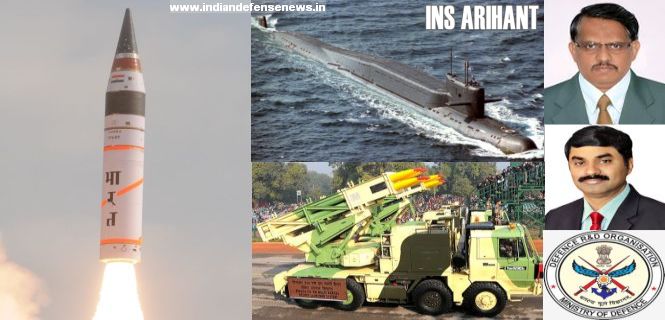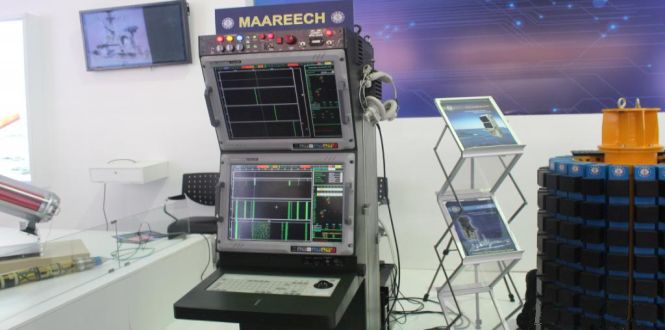
BALASORE: The year 2015 proved a mixed bag for Defence Research and Development Organisation (DRDO). The first successful launch of canisterised version of India’s longest range Agni-V missile and the maiden test of an underwater missile from indigenously built nuclear powered submarine INS Arihant besides induction of surface-to-air Akash missile in the armed forces were some of the major achievements.
Of the 16 missile tests in at least 11 categories, the trials were successful 14 times.
But, the unsuccessful launch of home-grown subsonic cruise missile Nirbhay left the defence experts worried. Of the three tests in the last three years, two failed. The DRDO drew flak from various quarters as the third test was reportedly conducted in a hurry even some of its major components did not clear quality tests.
This year the eye was on the first experimental trial of Agni-V from a canister. The missile with a dummy payload blasted off from the canister, a hermetically-sealed airtight container mounted on a road-mobile Tatra truck launching platform on January 31. The Gas Generator System (GGS) with a compact solid rocket motor put inside the canister successfully ejected the missile.
However, the much awaited test of Nirbhay missile turned out to be a worry for the defence fraternity. The missile deviated from the trajectory and aborted after 700 seconds of flight on October 16. The other missile which failed during its test was AAD interceptor, which fell down immediately after taking off from the launcher on April 6.
However, Agni-IV, Agni-III, Agni-I, BrahMos, Dhanush and Astra besides the nuclear fuelled submarine, INS Arihant, made DRDO proud. While BrahMos was successfully tested thrice from separate platforms including warships INS Kolkata and INS Kochi, Astra was fired from fighter aircraft Sukhoi twice.
Though planned twice, the air version of BrahMos could not be test-fired from a modified Sukhoi (Su-30 MKI) fighter aircraft. While the sophisticated launcher fitted with the aircraft is undergoing quality tests, the missile is expected to be tested live in mid-2016.
In fresh trials, India has test-fired its indigenously developed Nag anti-tank guided missile, which can hit a target up to seven km, from a helicopter at a firing range in Jaisalmer in Rajasthan On the other hand, after a long wait, the Akash weapon system was inducted into the Indian Army on May 5. HELINA, an anti-tank guided missile that can be fired in both direct and top attack mode was integrated on advanced light helicopter ALH. The missile with capability to defeat futuristic armours is undergoing field trials.
On the other hand, after a long wait, the Akash weapon system was inducted into the Indian Army on May 5. HELINA, an anti-tank guided missile that can be fired in both direct and top attack mode was integrated on advanced light helicopter ALH. The missile with capability to defeat futuristic armours is undergoing field trials.The DRDO achieved a major breakthrough with the development of Himshakti in a bid to establish a credible Integrated Electronic Warfare Systems (IEWS). The field evaluation and trials for any EW System prior to induction have been conducted for the first time in the actual area of deployment. In a significant contribution to boost fire power, the development of Pinaka MK-II with longer range has been completed and is undergoing trials.
A new Torpedo launch and recovery vessel INS Astradharini developed by DRDO has been commissioned by Indian Navy.

Naval Science and Technological Lab's Maareech Advanced Torpedo Defence System Station
Maareech, an indigenous Advanced Torpedo Defence System to protect Naval platform against torpedo attack, has been inducted in the Indian Navy. To promote ‘Make in India’ initiative, DRDO facilitated 75 Licensing agreements for Transfer of Technology (LATOT) to 57 industries.
Foundation stone was laid for the first defence manufacturing industry in the State.
The unit is being set up under the ‘Make in India’ programme by Sure Safety Solutions (SSS), a Mumbai-based firm in collaboration with Meggitt Defence Systems Limited, a UK-based international aerospace, defence and performance sensors group, in the Tata Steel’s Special Economic Zone (SEZ) at Gopalpur in Ganjam district.
The DRDO also signed a memorandum of understanding with Sri Venkateswara Vedic University (SVVU), sponsored by Tirumala Tirupati Devasthanam (TTD) to conduct scientific research on Vedas and scout for possible secrets pertaining to missile technologies hidden in the ancient scriptures.
The saddest moment for the defence fraternity though was the sudden death of ‘Missile Man’ APJ Abdul Kalam in July. As a tribute, the State Government renamed the Wheeler Island as Abdul Kalam Island.
Source>>
Source>>